Whether you plan on living or traveling in your van, parking it on a Harvest Host site, or storing it for the winter, you MUST take proper precautions and protect it from freezing temperatures in colder climates. Growing up in Florida, I had minimal experience when it came to living in winter weather, let alone living inside a van. Boy, I had a lot to learn. How do I know this? I got a real-life lesson and a huge wake-up call. Don’t make the same mistakes I did; use my tips to make sure winter won’t assault your rig, van, or RV.
Tip #1: Protect Your Pipes from Freezing Temperatures
When the temperature drops, it can cause water lines to break, fittings and connections to become loose, filters to break, and other damage to the water system in your van if not properly prepared. This can be costly to repair, and if you’re headed out on a road trip, you won’t have access to water in your rig.
Within that month of “firsts” picking my van up from my builder and heading straight to Colorado, where it was negative 17 degrees, I was a total newbie when it came to winter maintenance. I was staying at a friend’s house and left my van parked outside without realizing the need to leave my diesel heater inside the van throughout the night. I woke up the following day to all of my water lines inside of the van cracked from the water that was left in the lines expanding and breaking everything: my sink faucet, all of my water filters, my water pump, etc., and I had to repair and replace all of the parts within the first week of having and living out of my brand new van. I learned a hard lesson. I was lucky it didn’t happen while I was boondocking or at a campsite.
If you don’t protect your pipes, this happens:
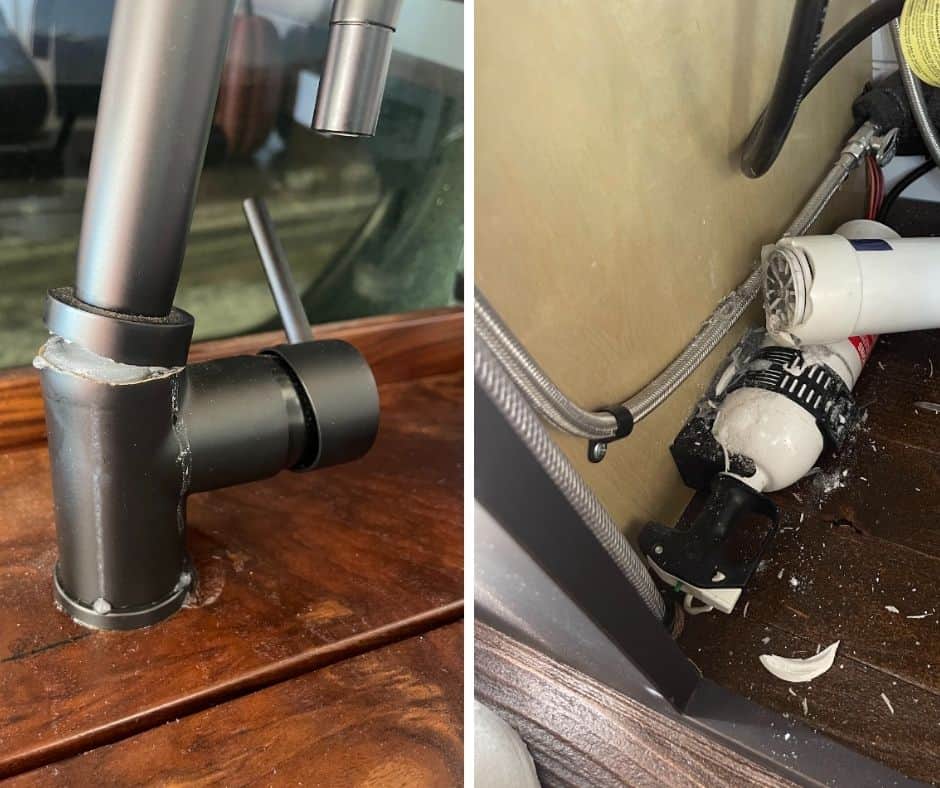
I have a 50 gal water tank inside the van that is insulated with two ½” pex pipes running under my van (also insulated) from my water tank to my sink. Because I’m in such low temperatures, the water lines running underneath the van still freeze. I am upgrading and running heat lines along my pipes underneath the van this winter so I can still utilize my water system this season. I also have insulation around all of my indoor pipes and water tank.
Tip #2: Insulation for Interior Comfort
You won’t see ‘interior comfort’ in many winterizing guides, but if you’ll be staying overnight in your van every weekend, on extended trips, or using your van as a permanent residence, insulation for interior comfort can make or break your ability to stay in the van for long periods of time when the temperatures drop below freezing.
Buildout Insulation
When your van is being built, be sure to ask about insulation for interior comfort. Many builders will talk about sound dampening and pipe insulation, but using the right insulation for the walls, roof, flooring, and doors is essential during any season. My van builder used Havelock Wool R7 insulation.
Extra Heater
After my first winter, I added an additional Espar heater underneath my van’s passenger seat. It has an advanced timer function to save fuel and energy. I have one Espar heater in the rear of the van near my bed; it keeps the back of the van warm and cozy; however, the front doesn’t keep heat in very well because it escapes from the cab area, doors, and sliding door. Now that I’ve upgraded to a second heater, the entire van stays extremely warm, and I don’t have any issues with it staying that way.
Insulated Sliding Door Cover
I added an insulated cover to my metal sliding door because it’s freezing to the touch in the winter and scalding in the summer. I’ve noticed a tremendous difference using this cover, keeping the inside temperature of the van regulated year-round. No heat escapes inside the van from the sliding door with this cover. I also have a couple of carpets on the floorboard of the cab area in my van to help keep the floor more insulated.
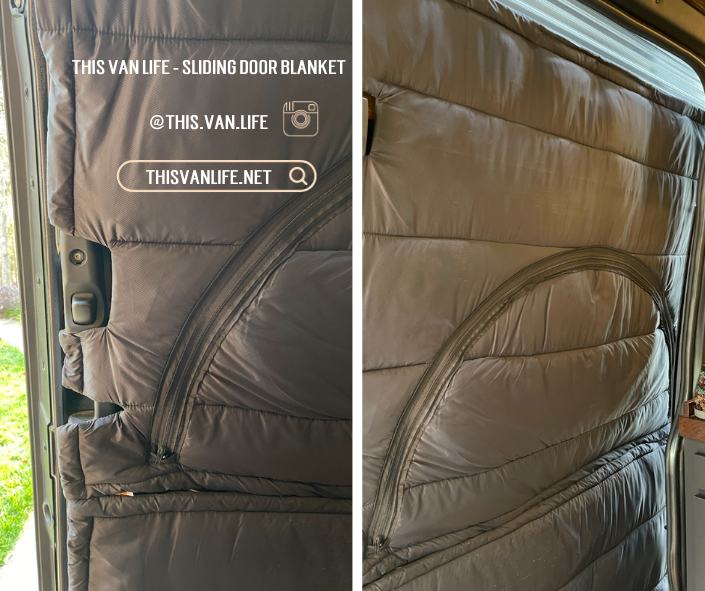
Insulated Window Covers
My van has Quest Overland window covers, and I use these year round for temperature regulation inside of the van as well as blackout privacy. These do a great job at keeping the windows insulated in the summer and winter. They also can be put up/taken down quickly with the accordion design and snaps they have so you can store them in place and not have to utilize space to store them. When being used, you cannot see light inside of the van, it makes the windows look completely black so you can’t see inside or tell whether someone is inside of the van at night.
I also have a windshield cover from Overland Gear Guy; it’s a new upgrade and it’s made a world of a difference when it comes to snow removal. Not only does it make scraping snow off of your windows easier and more effortless than ever, it also provides an additional layer of insulation to the windshield helping keep the heat in and the cold air out. When I’m ready to go, I just remove the cover and don’t have to deal with wipers that are stuck to the windshield or endless scraping and defrosting.
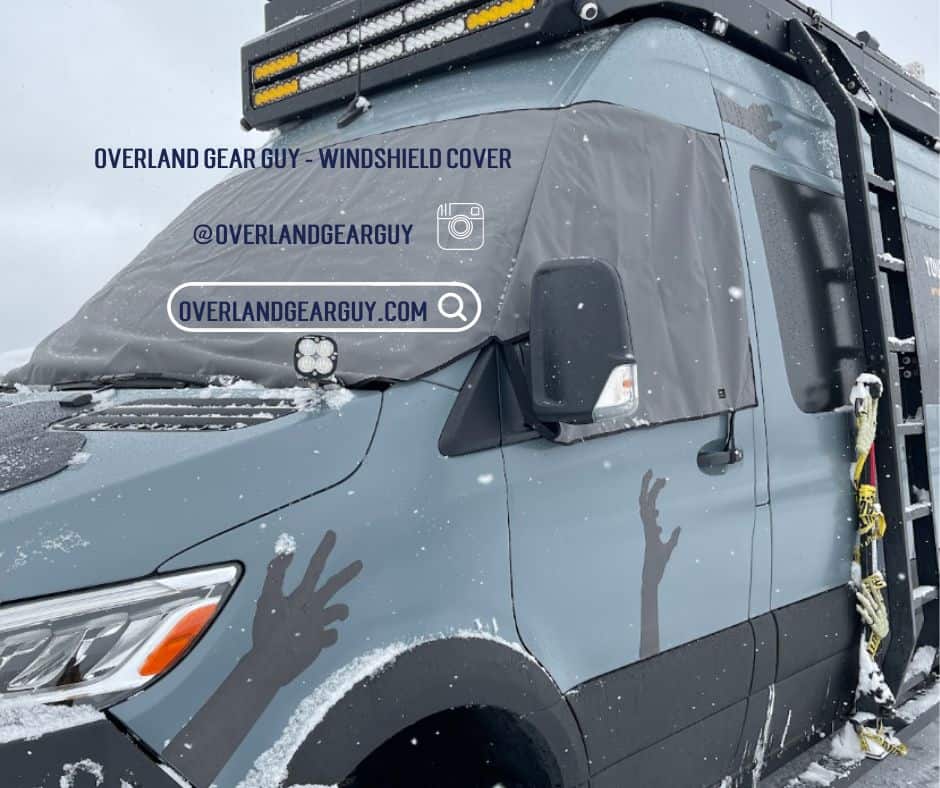
Tip #3: Clean Solar Panels
Solar power in winter? YES! Solar panels are a great way to supplement battery power in the winter … as long as you keep them clean. If your solar panels are out of sight, it’s easy to forget they get covered in snow, blocking all the sunlight. It’s tempting to assume the snow will not blow off the roof when you hit the road, but if it’s cold enough, it will adhere to a thin layer of ice and reduce the sunlight reaching the panels.
Don’t have solar panels yet? Check out Tiny Watts Solar.
Tip #4: Protect Your Battery
Keeping your van’s batteries regularly charged during the winter is super important; a fully charged battery is less likely to fail. By keeping your batteries charged, you’re ensuring you’ll have enough battery power to get you through a cold snap and avoid a ‘full discharge’ (running the battery down to zero power). Lead-acid batteries charge at a reduced capacity in cold temperatures, and lithium batteries cannot be charged in freezing temperatures. All batteries have a finite number of charging cycles. If you fully discharge the battery in cold weather every time the temperature drops, you’ll need to replace your battery a lot sooner than you intended or risk it failing when you need it most.
Extreme temperatures can be tough on batteries, regardless of their brand or type. I use a lithium battery in my Sprinter Van because they need very little maintenance, but they still need to be disconnected during long-term winter storage. If you’re parking the van in a driveway or staying in a campground with electricity, you can use a trickle charger connected to an AC outlet to keep the batteries charged. Just remember that lithium batteries can’t be charged when freezing outside. If you’d like a more detailed guide on cold weather lithium battery care, check out Lithium Hub.
Different types of batteries require different storage and maintenance techniques; always check your manufacturer’s website for the right guide. Check out the Victron Energy’s cold weather article for more guidance on cold weather battery care.
Tip #5: Winter Tires & Chains
Everyone has to start somewhere; being a Florida girl for so long, I had no knowledge about winter tires until I got my van and decided I was going to spend the winter in one of the coldest towns in America. And chains?! What the heck are those? Winter tires are a MUST if you drive through mountain elevations or areas known for snow. If you’re adventuring into ski country, get the snow chains in case of emergency; winter mountain weather is unpredictable. Auto parts stores and Amazon sell them. Keep in mind chains are not meant to be used for long distances, high speeds, or paved roads; keep usage during trips short, slow, and steady!
Winter Wish List – Gear & Supplies
Every van lifer has a wish list, and after my first winter in a van, here’s my wish list (Santa, are you listening?).
Chill Curtains
Vans that have window covers can get dark and depressing during the day. These Chill Curtains turn your sliding door into a giant window and you won’t lose any heat (or A/C in the summer). You can chill out in your van all day and enjoy the view and the sunshine. They have a Rear Chill Curtain for Sprinter vans, too.
Radiant Floors
The biggest regret of my build was not putting radiant floors into the build for those winter months. Although the floor is insulated, it’s freezing in extreme winter temperatures. I have to wear socks and slippers; if your feet are cold, it quickly travels to the rest of your body. Invest in radiant floor heating if you plan to spend time in cold climates.
I thought that having radiant floors would be more of a bougie option, not so much a necessity, but ice-cold floors are no joke when the temperatures drop below zero. It also contributes to the temperature inside of the van. Next season, I am upgrading to indoor mats to lay over the wood floors throughout the winter to provide an additional layer of insulation and keep the floors and my feet nice and warm!
Cab Divider
Right now, I don’t need one of these because I use my swivel seats as my work station/desk area, but if that ever changes, a cab partition is a MUST for winter travel. I have many full-time van lifer friends and they LOVE the partition by VanMade Gear. It keeps the “living space” of the van warm and regulated by not allowing any heat to escape to the cab.
Selk Bag
Yes, it’s a wearable sleeping bag. No, it’s not very fashionable, but it’s warm AF and it’s easy to hop outside to take the dogs out, talk to a neighbor, or just get some fresh air. I just got one of these and skipping the ‘snowman gear’ just to take the dogs out in the morning is awesome! Now I can avoid the hassle of putting all of that outdoor gear and stripping it all back off for a quick 5-10 minute walk outside your van. Go in with a few friends and get a Selk Bundle rate.
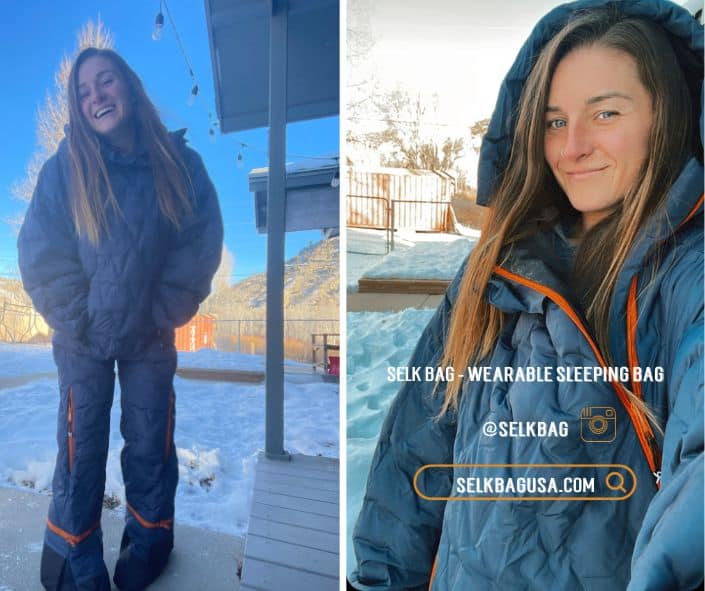
Lightweight Down Jackets & Vests
Cotopaxi has THE BEST lightweight down jackets and vests. Click here and check out their latest sales. Purchase a Cotopaxi product and support The Cotopaxi Foundation. The Foundation provides grants to nonprofits that help communities facing extreme poverty. Cotopaxi is also a member of 1% for the Planet; they donate at least 1% of annual revenue toward a healthier planet. In 2022, the Foundation aided 3.8 million people directly through poverty alleviation programs.
I hope this guide has given you some helpful tips for a van life winter or a winter road trip. This isn’t an all-inclusive list, but it’s a good start and will help you avoid some of the mistakes I made in my first winter trek. If you have suggestions that will help other winter adventure travelers, click here to send a suggestion.
Note: This guide is NOT MEANT as a long-term winter storage guide for vans that are not in use, nor is it an all-inclusive safety guide. All opinions are my own and you are advised to check with your van builder and parts manufacturer websites for official winterizing guides.
AFFILIATE / THIRD-PARTY LINKS DISCLOSURE AFFILIATE DISCLAIMER
Wholistic Wanders may partner with other businesses or become part of different affiliate marketing programs whose products or services may be promoted or advertised on the website in exchange for commissions and/or financial rewards when you click and/or purchase those products or services through our affiliate links. We will receive a commission if you purchase through our affiliate link at no extra cost.
We may also recommend other products, services, coaches, and consultants, but no such reference is intended to be an endorsement or statement that such information provided is accurate. We recommend these based on our personal experiences, but it is still your responsibility to conduct your own due diligence to ensure you have obtained complete, accurate information about such products, services, coaches, and consultants.
These affiliate or third-party relationships in no way compromise the integrity of the content, information, services, and materials being presented to you here, and you are under no obligation to click on these affiliate links to purchase those products or services being offered. These affiliate programs are selected based on personal experiences, preferences, and brand partnership agreements. View the full disclaimer here.

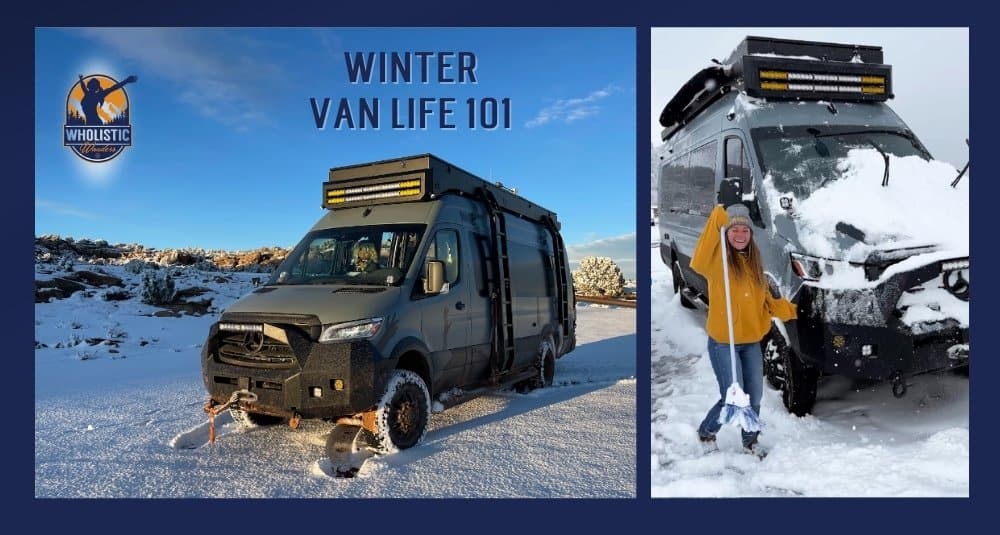
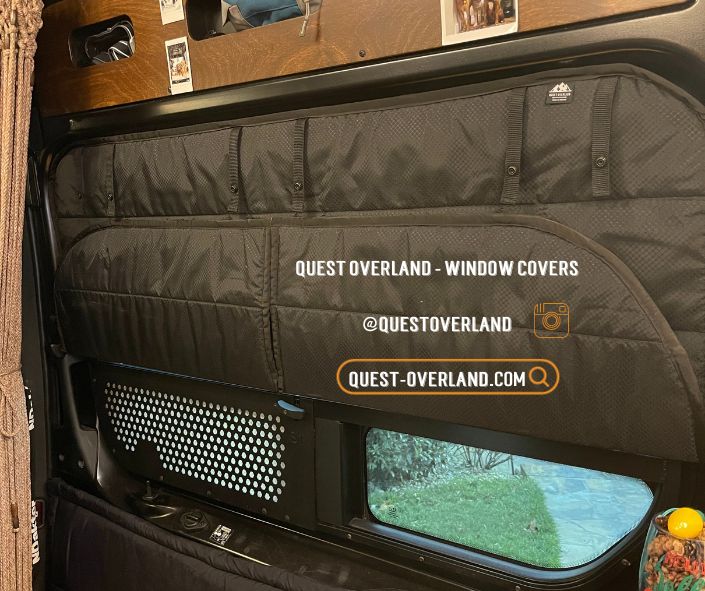
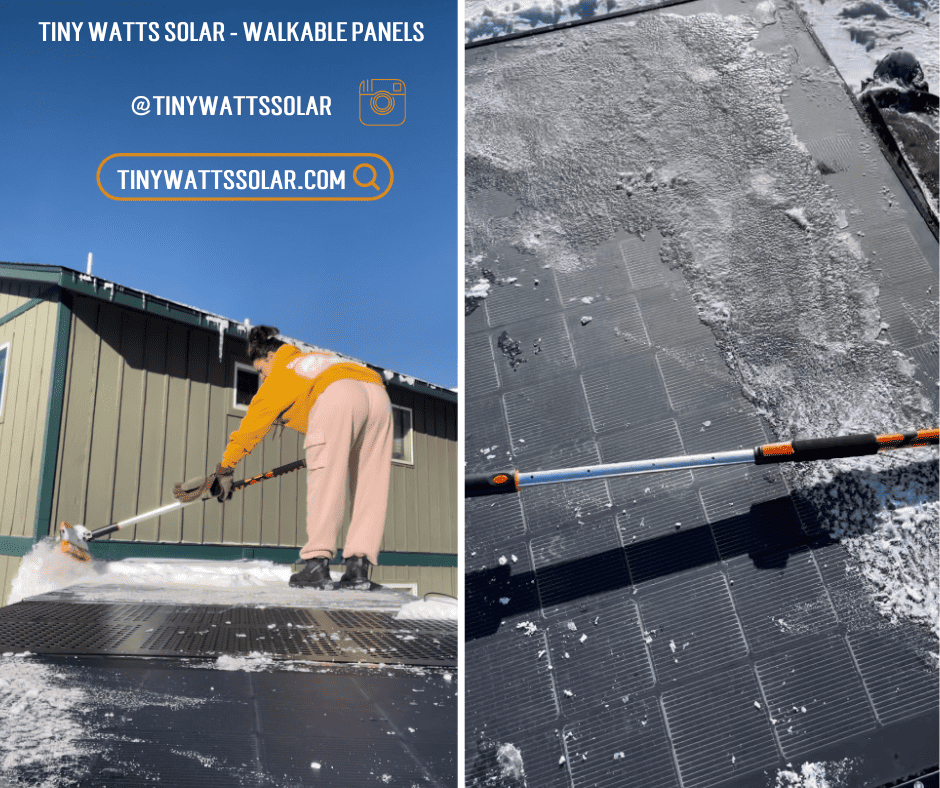


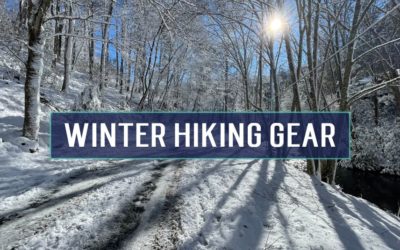

0 Comments